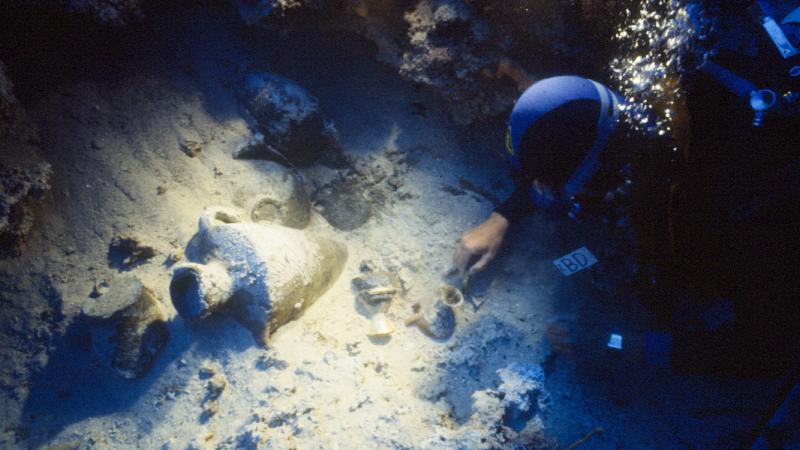Among the Asante people of what is now Ghana, the legend goes that two hunters in the bush came across a spider building a web and were inspired to invent the art of weaving. For the Asante and the neighboring Ewe people, that art reaches its highest expression in the fabric known as kente. Kente cloth, long a badge of Asante royalty, has now become one of the best-known textiles in the world.
In 1998, with $163,121 from NEH, UCLA’s Fowler Museum of Cultural History opened “Wrapped in Pride: Ghanaian Kente and African American Identity,” a groundbreaking exhibit exploring how the most famous of African textiles became an iconic addition to American culture.
Seven years later, “Wrapped in Pride” became one of the first traveling exhibitions in the NEH On the Road program, which allows museum exhibits to be scaled down for small venues around the country. Since its launch in 2005, 16 exhibits have traveled to 39 states and been viewed by over 1.5 million people. On its tour, “Wrapped in Pride” visited 33 museums in 20 states. Deborah Cowman, director of the Brazos Valley Museum of Natural History in Bryan, Texas, recalls how large crowds came to see “the vibrancy and artistic beauty of the cloths, which are just stunning.”
The heart of the kente tradition is the Asante village of Bonwire, which supports a thriving industry. Even now, most kente weavers are men. Many are trained from a young age to work the long, narrow treadle looms that produce strips of patterned fabric, which are then stitched together to form garments. While kente strips vary in color and complexity, they encode vital cultural meanings: the lengthwise, or warp, patterns are often named after important people or events, while the crosswise, or weft, patterns usually take the names of familiar objects. The work is intricate: A man’s cloth may take months to complete. Weavers often work together, making their industry a means of social cohesion as well as income.
Though kente has customarily been reserved for special occasions, over the past few decades it has gained tremendous popularity and an ever broader range of uses. Since Ghana’s first prime minister, Kwame Nkrumah, brought kente to the world stage in the 1950s, public figures from Muhammad Ali to Nelson Mandela to Bill and Hillary Clinton have worn kente garments. Designers have incorporated kente into a variety of products, a development that has sparked debate over commercialization of a treasured cultural tradition. But kente’s growing prominence has also expanded its symbolic power.
The “Wrapped in Pride” traveling exhibition brought to visitors across America an understanding of how one people’s artistic tradition became a powerful international symbol of heritage, hope, and solidarity. As Mary Kennedy, CEO of Mid-America Arts Alliance, observes, “For visitors to ‘Wrapped in Pride,’ the next time they saw kente-influenced surface design here in the U.S. they had a deeper and richer understanding of its authentic origins.”
Written by David Soud, a Maryland-based writer, teacher at the University of Delaware, and author of Divine Cartographies: God, History, and Poiesis in W. B. Yeats, David Jones, and T. S. Eliot.


